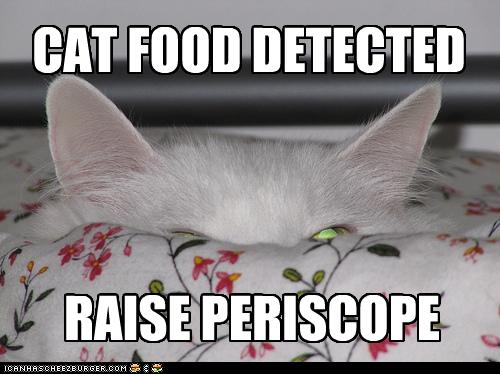Balloon Boy. Sneezing Panda. Sleepwalking Dog.
There is a sort of warped existence in this world that controls much of the way we interpret humor and mystery. Plainly put, a large amount of things that are “weird” can be considered “funny,” and as a culture, we seem to be exploring this more frequently than ever before.
Technology, it could be said, is the defining feature of our current age, the sitting poster boy for technology being the internet and the new way we process the world: through the lens of a computer screen.
If one of technology’s main goals is to advance human flourishing through efficiency and knowledge by means of direct access to information, then one could rightly say that technology has brought certain combative elements to being efficient into our cultural sphere. In other words, too much information doesn’t necessarily mean more efficiency, mostly because we’re too fascinated by that which is warped and mysterious – so much so that we’ll watch a video of a dog sleepwalking and running into a wall ten times before it gets old. Why? Because it’s weird. And hilarious. And “cats doing funny things” has permeated our worldwide web of information to a point of warranting investigation.
A number of companies have capitalized on this fascination – the main one being, of course, YouTube, where one can click frantically through this world’s oddities for hours on end. But another source of constant entertainment has to be Yahoo! Odd News, a news page completely dedicated to the stories that evoke hilarity from the mystery.
Compiled of five “weird news” sources from around the globe, including Reuters and the AP (yes, apparently they have “weird news” divisions), Yahoo! Odd News has brought a journalistic sense to the weird, mixing the small town police blotter with Barnum’s American Museum.
If you haven’t seen the headlines on Yahoo! Odd News, you are missing out on a magical land of wonderment that will give you a good laugh and make you question the advancement of human evolution. Some headlines include “Burning bunnies keeps people warm and cozy,” “Texas man finds a rocket launcher on his property,” and “Lottery winner causes riot at Ohio coat store.” What?
The odd or otherwordly has always been newsworthy, but viral videos and citizen journalism has made it even more so. What’s interesting is that this content is not substantive, but strange. Instead of giving weight to a thought-out investigation, readers and viewers seem to be more interested in the inexplicable. In a post-enlightenment culture, where everything is weighed on the merits of scientific plausibility, this seems to be a universal interest of the masses that reason can’t trump.
On YouTube, you can while away the hours watching top viewed videos like “Baby Panda Sneezing,” “Charlie Bit My Finger,” and “Bizkit the Sleepwalking Dog.” All of these are out-of-the-ordinary acts in familiar contexts.
Why is this important? Because it takes up our time.
“Bizkit the Sleepwalking Dog” has had over 17 million views, if you add up all of his videos cumulatively. That’s nothing. “Charlie Bit My Finger” has a whopping 127.4 million views, or 242 years worth of viewing time for one video. The number of videos of babies doing weird/funny things has reached staggering proportions (a baby laughing an old man’s laugh – 95 million views, “Baby Laughing Devil Laugh”– 23 million views, “Snake Swallows Hippo”– over 12 million views combined, “Battle at Kruger”– 46 million views equaling 755 years of viewing time for that one video alone). “America’s Funniest Home Videos” would have a problem on their hands. We have such quick access to the technology that is imaging our world that our eyes can’t keep up with our brains. We are capturing too much to see. Moreover, we are capturing too much to explain.
It would be hard to imagine that the creators of YouTube started their video venture in an attempt to give voice to all those crazy things that animals and babies do. But that is largely what it has become. The weird, warped, and otherworldly aspects of this planet have always been around; we just now have a medium to readily view them. In other words, the world is not a stranger or more inexplicable place than it was 500 years ago – we’ve just come up with more ways to shine light on the fractured earth we live on. This begs the question: in its explanation of those things which we didn’t before understand, does technology also uncover the same amount of things we never knew existed? Is technology filling a hole by digging another hole?
Whether it is proof of a broken creation that a dog sleepwalks and runs into a wall can be debated. But even our highest sources for news can’t resist the temptation to put a camera on the bizarre. CNN’s coverage of the Balloon Boy has been widely satirized because the network gave it such weight. It was a story of epic proportions that ended in ordinary fashion. The major news channels couldn’t pass up the possibility that a boy might be flying,Flight of the Navigator style, in a saucer-shaped homemade dirigible. It was the potential for otherworldliness that caught the attention of the masses.
It is human nature to be inquisitive, to stand in wonder. Whether it’s a viral video or a journalistic account, these things provoke us to engage others in our fascination. But why do we feel the need to share this with others and insist that they be fascinated, too? This has become a significant cultural tool. If something can provoke a “you gotta see this” response, then people will follow.
Imagine if we had that same fascination about legislation. Every time a bill passed, would you email your friends after reading it, saying “OMG, you gotta see this amendment that blocks the G.O.P. effort against Rangel”? No. That would never happen on the level that YouTube has achieved. The old saying goes, “There are two things you never want to see being made: laws and sausages.”
Culture is shaped by what fascinates us, and according to our time spent watching the aforementioned videos, we’re attracted to the mystery in our world.
If comedy is truly the highest form of drama, then it is obvious that something isn’t quite right. It is this same instinct that makes us step back from our computers, chuckle in complete confusion, and ask: WTF?




